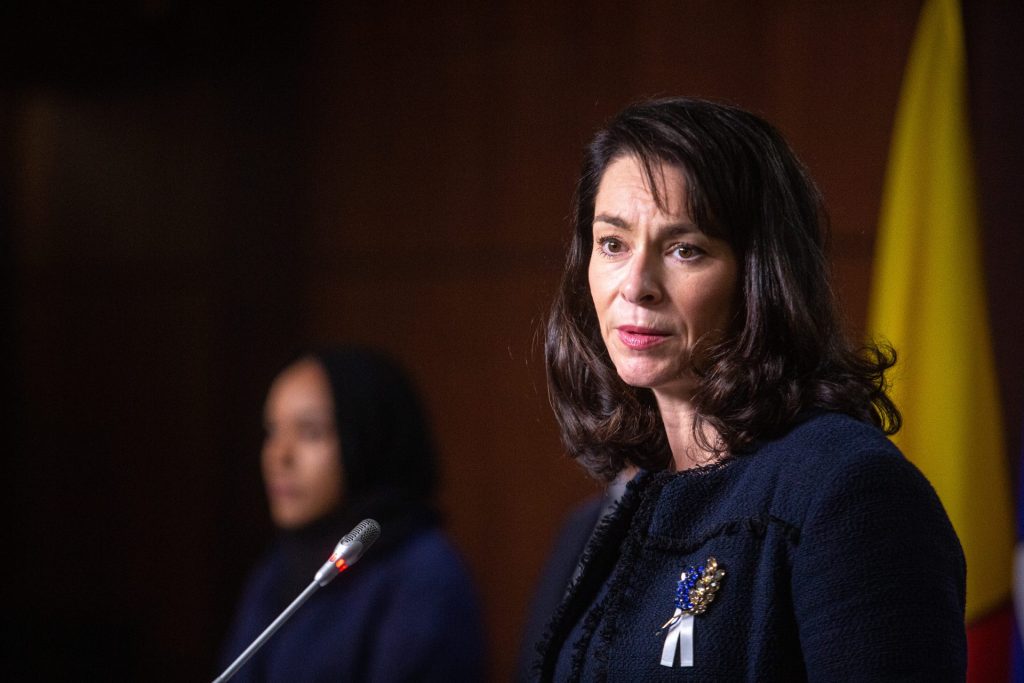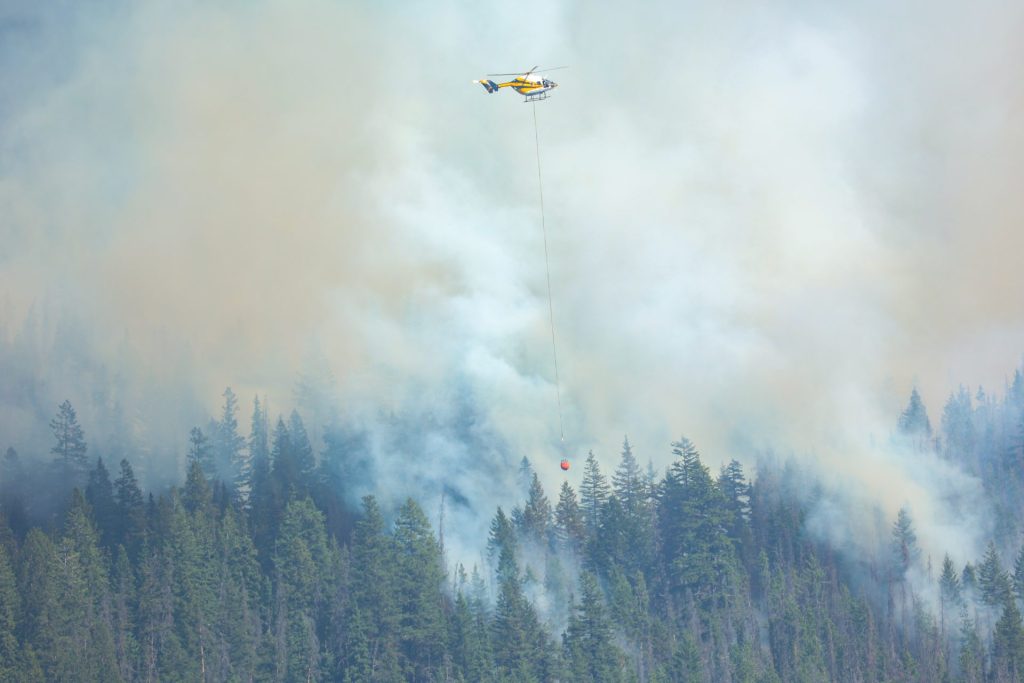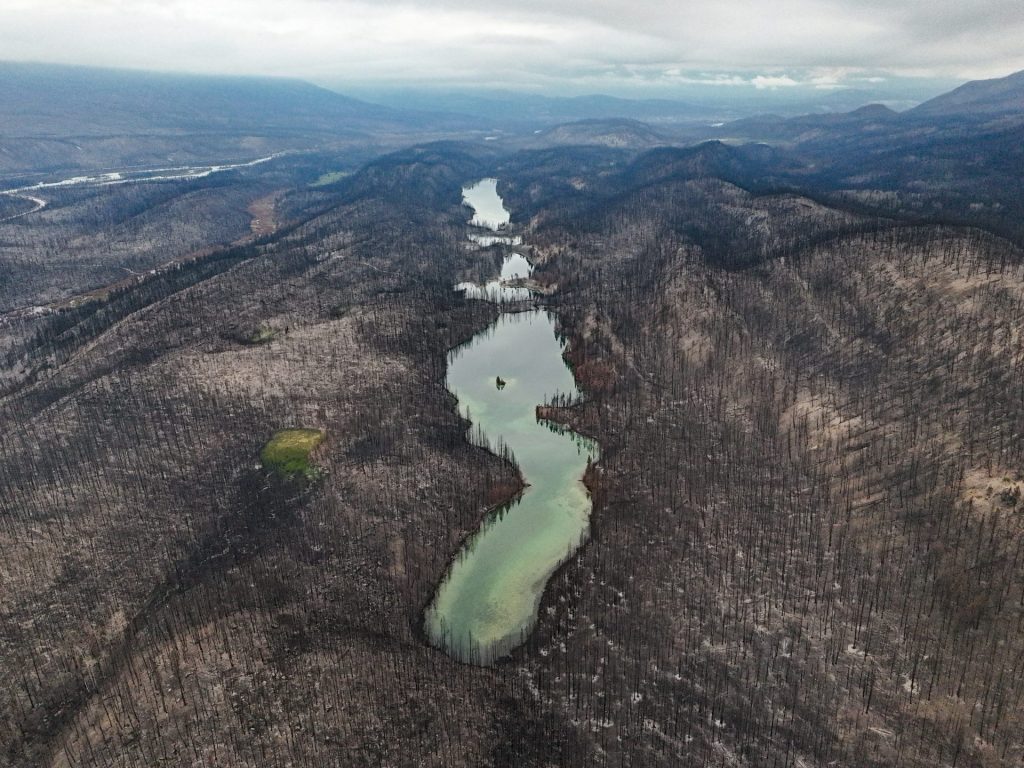A review of the Jasper Wildfire response says a number of factors, including jurisdictional issues, such as the Alberta government trying to step in as a decision-maker, hampered the response to the flames that burned through one-third of the national park, resulting in the second-costliest wildfire in Canadian history.
The Municipality of Jasper released the independent After-Action Review (AAR) on July 18, just days shy of the one-year anniversary of when flames first raged through the mountain town on July 22, 2024. It lays out 23 recommendations, such as having clearer evacuation protocols, more training, making sure equipment is compatible with local resources, and updating building codes to require builds with materials that reduce fire spread.

NDP MP Heather McPherson (Edmonton Strathcona, Alta.), who grew up and got married in Jasper, said that the “horrific” fire led to some “deep trauma” for many Albertans who see the park as “the heart of our province.”
The wildfire was one of the most devastating in the nation’s history, resulting in 32 per cent of Jasper’s structures burned down and over 32,000 hectares destroyed.
McPherson emphasized the importance of the report, as it was commissioned “so that Albertans and Canadians could learn better on how to deal with natural disasters like this in national parks.”
She said that as wildfires and climate events become more frequent, there is a corresponding need to improve responses.
This is a reality that McPherson said she recently spoke about in Banff, Alta., a beloved national park on Alberta’s southwestern border.
“The question is not, ‘Will there be a large-scale forest fire in Banff?’” she said. “It is, ‘When will there be a large-scale forest fire in Banff?’”
McPherson called for more co-operation between the provincial and federal governments, with an eye to controlling future blazes in the province.
“Many of the biggest disasters that have happened recently in Canadian history have happened in the province of Alberta. And so we need a provincial government that’s willing to work with the federal government, and a federal government that’s willing to work with the provincial government to provide responses to Albertans,” she said.
“Just because someone lives in a national park doesn’t mean they should get less support or less co-ordinated support than any other Canadian.”
Over five million hectares of land have already burned this summer, mostly in northern Saskatchewan and Manitoba, according to Natural Resources Canada’s weekly National Wildland Fire Situation Report. While the number of forest fires is average for this time of year, the area burned to date is more than double the 10-year average, the July 16 report reads.
Two of Jasper’s AAR recommendations seek to address inefficiencies that arose because of jurisdictional issues, with the province stepping in and trying to “exercise decision-making authority,” despite the national park being a federal responsibility. The review writes that the Alberta government’s involvement added “complexity to the response.”
The “Province of Alberta, though not jurisdictionally responsible to lead the incident, regularly requested information and sought to exercise decision-making authority,” the report reads.
National parks are a federal responsibility
Being a national park, the wildfire response in Jasper was under the jurisdiction of the federal government, not the provincial government. This is unusual—province and territories are typically responsible for their own wildfire responses, with the federal government only stepping in when those governments request their aid.
This is something Mike Flannigan, a natural resources professor at Thompson Rivers University in Kamloops, B.C., said made the Jasper response “more complicated than your normal case,” and could have contributed to jurisdictional confusion.
Flannigan, also a B.C. innovation research chair in predictive services, emergency management, and fire science, stressed that in emergency situations, things move rapidly.

“Whenever an emergency happens, yes, people have plans, and sometimes they have decent plans … and sometimes they’re followed, and sometimes they’re not,” he said. “It’s a high-stress chaotic environment, and you have to make decisions quickly.”
Flannigan said that ensuring “unified command” in emergencies with overlapping jurisdictions can be “challenging,” as there are often different “personalities” alongside “ignorance of what the rules are.”
Still, he said the issue isn’t fighting the fire itself. Issues arise when there are evacuations and other processes added into the mix, he said, as it adds to confusion and disagreements between jurisdictions about who is authorized to do what—and when—and what procedures are.
“We need to be better co-ordinated,” he emphasized. “There should be a guide, kind of like a standard operating procedure. ‘This is what we do, and we follow it.’ We do it, and we stop arguing about who’s the boss.”
‘Unfortunate’ politicization of ‘very solid’ report, says Sen. Simons
Alberta Senator Paula Simons said it’s “unfortunate” the report has been politicized, calling it “a very solid” review as a result of “an incredible amount of community engagement.”
On the day of the report’s release, Alberta Premier Danielle Smith called it a “shot out of the blue.”
“It’s unfair, it’s untrue, and I would like them to withdraw it,” Smith told reporters, asking for an “apology” from the municipality.

In a statement released July 21, Jasper emphasized the review “is not a political document”—an assessment later echoed by Jasper Mayor Richard Ireland. The municipality wrote it takes “exception to the politicization of the After-Action Review and its observations, especially in the media.”
“Unfortunately, much of the recent media coverage has narrowly focused on a single sentence within a 50-page report,” the release reads.
Ireland told reporters during a press conference on July 21 that the review “was not intended to ascribe blame, and it does not ascribe blame”—words that were also included in the report, which explained its scope was the municipality, not the provincial or federal government, only addressing overlaps when they occurred.
In an email statement to The Hill Times, Smith’s office said they “appreciate” the municipality’s clarification and acknowledgement that they “never intended to be critical of the province’s contributions.”
The statement reads the office “share[s] their concerns about how some media outlets chose to misrepresent and politicize the content and tone of the report.”
Like Flannigan, Simons noted that with Jasper being a national park, “there were always going to be challenges with jurisdiction,” but that “tensions” between the provincial and federal governments are high in Alberta, especially amid recent calls for separation—which could be behind some of the politicization.

Simons also said Jasper is a special location for many Albertans.
“I don’t blame people for wanting to cast blame because people’s hearts were broken by the fire in Jasper, because it is such an iconic place that many Albertans and many Canadians have a special affection for,” said Simons, who is a member of the Independent Senators Group (ISG).
Still, she said “it’s really important that as we cope with the trauma and deal with our feelings that we’re not … pointing fingers and blaming after the fact.”
But McPherson said she thinks the issues with jurisdiction come down to Smith’s government.
“Danielle Smith and the [United Conservative Party] have such a focus on attacking Ottawa regardless of what’s being done,” she said.
Jen Beverly, associate professor of wildland fire at the University of Alberta, called the narrative of blame “very unfortunate,” adding that it may be the result of some “misunderstanding” or “miscommunication,” as the scope of the report was on the municipality’s response, not the provincial government’s.
But Beverly said that due to the “explosive” situation in Jasper, which had firefighters battling flames going in two different directions, jurisdictional clarity likely would not have stopped the fires from spreading at the rate they did.
“These were explosive burning conditions. The intensities that these fires were burning under on July 22 when they first started far exceeded anything anybody could have done,” said Beverly, who has also worked as a wildland firefighter, agreeing with a number of the AAR’s recommendations, like more scenario training for responders.
Overall, she said the response in Jasper was good, noting that in her conversations with those involved, she found it “incredible how well this was … planned for and anticipated.”
Opinions split on need for a Canadian FEMA
On June 10, ISG Senator David Arnot (Saskatchewan) called for the creation of a national emergency response agency to improve wildfire responses, saying it “makes common sense,” and is needed to bolster wildfire responses across the country.
Some still think a national agency is the answer, including Flannigan. McPherson also expressed support of the idea, noting that the NDP has been calling for a “federal wildfire fighting force for some time.”
In June 2024, former NDP MP Richard Cannings sent a letter to then-prime minister Justin Trudeau urging him to create a “national wildfire task force.”
But some remain unconvinced a national agency is the answer. Simons, who served as the Senate Agriculture and Forestry Committee’s deputy chair during the last Parliament when it studied wildfires last year, said witnesses on the whole weren’t proposing that as the solution.

“What people said wasn’t that they wanted a national group sweeping in,” she said, referring to testimony heard in the Senate. “They wanted better co-ordination, so that people on the ground in local communities … got the training to do wildfire fighting, that they got the resources they needed, and that they didn’t feel pushed out.”
Parliament was prorogued in January before the Senate committee finalized the study.
What’s needed is “better co-ordination for local firefighting,” she said, adding that though she couldn’t divulge what recommendations may have been in the committee’s report, she did not see a national agency “as a logical consequence of the evidence” heard.
Likewise, Beverly said the narrative is being “advocated without any evidence or … logic,” saying the report “reinforces” there is no evidence of co-ordination failure. She added that, based on the AAR, a national firefighting agency would only have “made the response and the operations more complex and more difficult.”
ewand@hilltimes.com
The Hill Times
